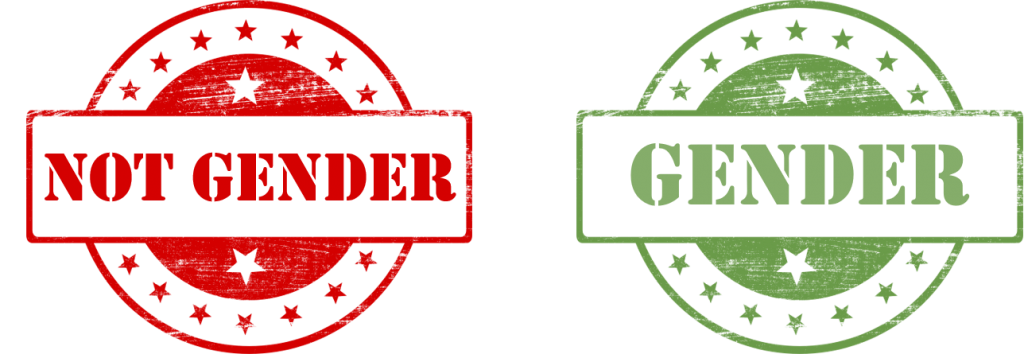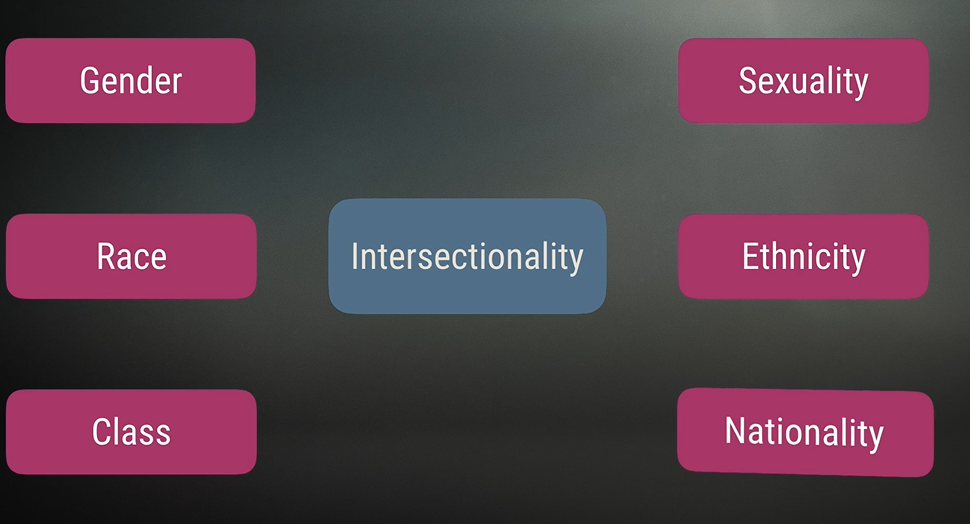IS INNOVATION DOING GENDER?
September 3, 2019
More than ever in human history, Gender is a hot concern. With the rise of the Internet or the Social networks, the recent #MeToo social earthquake has irremediably reshaped the entire world. This way, as an Innovation Leader but also and especially as a human being, freshly certified  by the University of Hong-Kong for “Doing Gender & Why it Matters”, I’ll try to tell you, through a series of blog posts
by the University of Hong-Kong for “Doing Gender & Why it Matters”, I’ll try to tell you, through a series of blog posts

How Innovation carries
a myriad of hopes regarding Gender
In that way, scanning through several new tech trends like AI, Autonomous mobile Robots, 4D printing, exoskeletons and more, I’ll bring you to realize that innovation is likely to disappoint somehow the promise of a better tomorrow for Gender.
But before we get into Hi-Tech discussions, let’s ramp up our knowledge on gender.
What is Gender?
Gender is defined as the social and cultural characteristics that we associate with being a male and a female. Gender is socially constructed (Professor Karen Joe Laidler, a Sociologist from the University of Hong Kong). Personally, after my training on Gender, if I had to tell you what Gender is in two words, it would be:
- Cultural: Gender is our appearance and our day-to-day behavior
- Intersectional: Gender is an intersectional topic
Maybe I owe you further explanation on these two bullets:
Heterosexual patriarchal world
During the MOOC, I discovered that everything related to Gender topic comes from Culture. Everything. Even the repartition of humans into two distinct groups: male/ female. Meaning that, apart from a biological perspective, all the differences we want to apply between what “we call a Man” and “what we call a Woman” are cultural. This is what Dr. Aditi Jhaveri from the Faculty of Hong Kong calls Gender Stereotypes. Understand that these alleged differences are definitely not natural but human constructions. And it is historically factual to say that the architects of this binary world are exclusively heterosexual patriarchs.
Intersectionality

Gender never exists in isolation. It always intersects with other factors: Ethnicity, Class, Sexuality, Nationality. It is part of an intersection of different dynamics in a planned society. Introduced by Kimberlé Williams Crenshaw, an American lawyer, civil rights advocate and a leading scholar of critical race theory, the term Intersectionality is key to address gender topic.
“To understand the concept, we could imagine the intersection of streets where two or more roads come together at one point. Similarly, Intersectionality is the connecting point of different aspects of our identities, including gender, class, sexuality, ethnicity and nationality et Cetera et Cetera.”
Furthermore, these are two key points for you to understand before we navigate through the next posts. Let’s summarize. Gender is a mille-feuille of stereotypes stacked by powered heterosexual men for centuries, imposing global beliefs that Mother Nature would have spread the roles as below
THE FEMALE IS TO BE
- Emotive & Sensitive
- Nice & Caring
- Always trying to please
- Not capable of decisive actions or decisions
- At home
THE MALE IS TO BE
- Breadwinner
- Performant
- Dominant
- Powerfull
- Decision Maker
- On the Field
Besides, if you want, I can share you plenty of PhD, literature, TV shows… demonstrating that 100% of the above is fully stereotypes and that
We are not born with these prejudices

That’s most important for me. Before we go any further, I just want you to know that our attitudes and beliefs of gender are fundamentally shaped by those with whom we interact with over the life course, starting from 4 years old, where stereotypes are started to be formed. And today, many innovations that recently intruded our day-to-day life are constantly exchanging with us.
Moreover, our smartphone is statistically the one we interact the most with. Spending on an average more than 2h and 51mn per day, 2.7 billion of Smartphone users interact with their device 150 times a day to unlock it. While a human laughs roughly 15 times daily (Source: Statista 2018/2019).
How does this omnipotent digital friend behave and shape our visions on Gender in the Information age? Is this increasing our beliefs and unconscious bias or does it help the Gender cause?
That the question we’ll start to address in the next blog post.

 English | EN
English | EN 